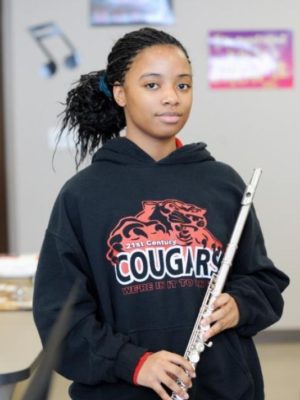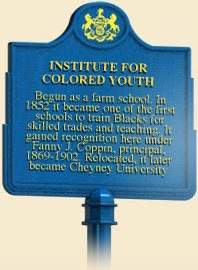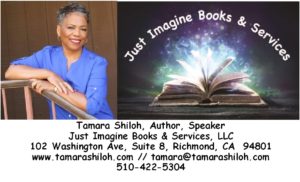Mr. Nelson Mandela once said, “Education is the most powerful weapon we can use to change the world.” A very powerful statement. It’s like, the more you know, the more you grow. I read something that I’d like to share from an article written by Arne Duncan, past U.S. Secretary of Education: Education is the key to eliminating gender inequality, to reducing poverty, to creating a sustainable planet, to preventing needless deaths and illness, and to fostering peace. And in a knowledge economy, education is the new currency by which nations maintain economic competitiveness and global prosperity.
 Education is an investment, and one of the most critical investments we can make. This is true not only for the United States, but for countries around the world. Expanding educational access for girls is not just an urgent economic and social need. In many cases, it is literally a matter of life and death. A mother who can read can better protect her children from chronic illnesses, from AIDS, and from dying young. A child born to a mother who can read is 50 percent more likely to survive past age five. More here
Education is an investment, and one of the most critical investments we can make. This is true not only for the United States, but for countries around the world. Expanding educational access for girls is not just an urgent economic and social need. In many cases, it is literally a matter of life and death. A mother who can read can better protect her children from chronic illnesses, from AIDS, and from dying young. A child born to a mother who can read is 50 percent more likely to survive past age five. More here
The new school year has started. Buy books for your children. Read to your children. Listen to your children. Watch your children.

There are wonderful examples of why education works. We have extraordinary kids doing extraordinary things like Raven Osborne. Raven, who has been taking college classes part-time, is about to graduate from college—before she gets her high school diploma. And now she is going to be a teacher at the same high school. She is a senior at the 895-student 21st Century Charter School in Gary, will earn a bachelor’s degree in sociology with a minor in early childhood education from Purdue University Northwest on May 5, then graduate from high school on May 22.
She began taking classes at a local community college as a freshman and soon earned an associate’s degree in general studies. Then, encouraged by her mother, Hazel Osborne, and 21st Century’s president and superintendent, Kevin Teasley, she decided to become the first in the school’s history to earn a bachelor’s degree while still enrolled. “When I was a younger, I was labeled with a learning disability,” Osborne told the Northwest Indiana Post-Tribune in 2016. Shetold the Post-Tribune it was tough taking both high school and college classes and that there were times when she wanted to quit, but her mother constantly encouraged her. “My mother always told me I could do whatever I wanted to do in life,” she told the paper. While at Purdue Northwest, which is in nearby Hammond, Osborne stood out to faculty and staff, BTN reported. “She not only is academically gifted, but has demonstrated amazing intellectual maturity in her pursuit of a baccalaureate degree at Purdue Northwest,” Purdue Northwest spokesman Wes Lukoshus told the Northwest Indiana Times. More about Raven
 And speaking of education and historically speaking, the first Historical Black College University was the Institute for Colored Youth was founded in 1837 in Philadelphia, Pennsylvania, United States. After moving to Delaware County, Pennsylvania, and changing its name to Cheyney University, it continues as the oldest African-American school of higher education, although degrees were not granted by Cheyney until 1913. The second site of the Institute for Colored Youth at Ninth and Bainbridge Streets in Philadelphia was added to the National Register of Historic Places in 1986. It is also known as the Samuel J. Randall School, and is a three-story, three-bay brick building built in 1865, in the Italianate-style.
And speaking of education and historically speaking, the first Historical Black College University was the Institute for Colored Youth was founded in 1837 in Philadelphia, Pennsylvania, United States. After moving to Delaware County, Pennsylvania, and changing its name to Cheyney University, it continues as the oldest African-American school of higher education, although degrees were not granted by Cheyney until 1913. The second site of the Institute for Colored Youth at Ninth and Bainbridge Streets in Philadelphia was added to the National Register of Historic Places in 1986. It is also known as the Samuel J. Randall School, and is a three-story, three-bay brick building built in 1865, in the Italianate-style.
The Institute was founded by Richard Humphreys, a Quaker philanthropist who bequeathed $10,000, one-tenth of his estate, to design and establish a school to educate people of African descent. Born on a plantation in the West Indies, Humphreys came to Philadelphia in 1764, where he became concerned about the struggles of free African Americans to make a living. News of a race riot in 1829 prompted Humphreys to write his will, in which he charged thirteen fellow Quakers to design an institution “to instruct the descendants of the African Race in school learning, in the various branches of the mechanic Arts, trades and Agriculture, in order to prepare and fit and qualify them to act as teachers….” Read more
The new school year has started. Buy books for your children. Read to your children. Listen to your children. Watch your children. So there…..
It’s holiday giving time – and Black History Month is right around the corner! Visit my website www.tamarashiloh.com and get your copy of the first book, Jaxon’s Magical Adventure with Black Inventors and Scientists of the children’s book series, Just Imagine…What If There Were No Black People in the World? Along with the book, also get a copy of the journal, activity book and coloring book.
See ya next time!
